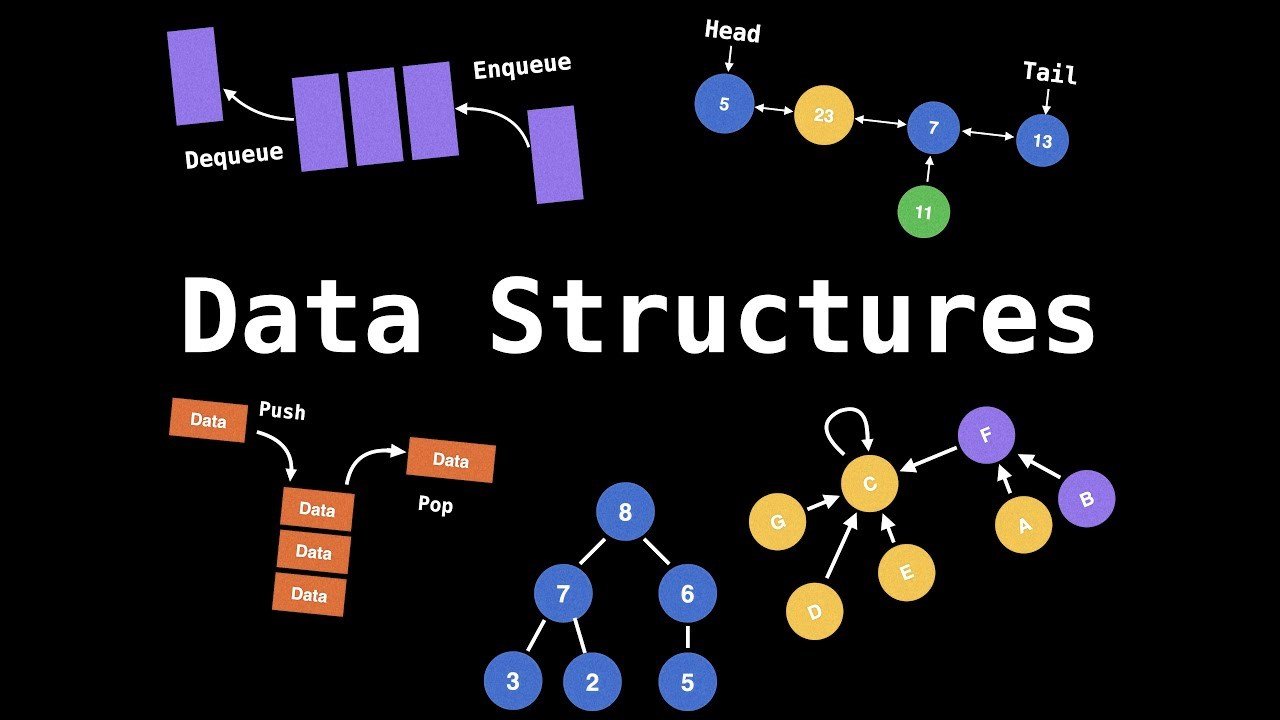The Importance of Data Structures in Computer Science in 2023

In today’s rapidly advancing world of technology, data plays a crucial role. As the volume of data continues to grow exponentially, efficiently organizing and managing data becomes vital. This is where data structures come into play. Data structures provide a way to store, organize, and manipulate data effectively, enabling efficient algorithms and optimal software solutions. In this article, we will explore the importance of data structures in computer science and their significance in the year 2023.
In the field of computer science, data structures refer to the organization and storage of data in a computer’s memory. They allow programmers to store and retrieve data efficiently, ensuring optimal performance and resource utilization. Data structures are the foundation upon which various algorithms and applications are built.
Read more: The Science of Tomorrow: Cutting-Edge Research that Will Blow Your Mind in 2023!
What are Data Structures?

Data structures can be thought of as containers that hold data in a specific format. They define the way data is stored, accessed, and manipulated. Data structures can be categorized into two main types: primitive data structures and abstract data structures.
Primitive data structures include basic data types such as integers, floating-point numbers, characters, and booleans. They are fundamental building blocks that form the basis for more complex data structures.
Abstract data structures, on the other hand, are more complex and provide a higher level of abstraction. They include arrays, linked lists, stacks, queues, trees, graphs, and hash tables. These data structures offer efficient ways to organize and access data, allowing for faster and more optimized algorithms.
Importance of Data Structures
Data structures play a pivotal role in computer science for several reasons:
Efficient Data Access: Data structures enable efficient access to data elements, allowing for faster search, insertion, deletion, and modification operations. This efficiency is crucial when dealing with large datasets or time-sensitive applications.
Optimized Algorithms: Well-designed data structures lead to optimized algorithms. By choosing the appropriate data structure for a specific problem, programmers can devise algorithms that operate more efficiently, reducing time and resource complexity.
Memory Management: Data structures help manage memory efficiently. They allow for dynamic memory allocation, minimizing wastage and fragmentation. Efficient memory management leads to better utilization of system resources.
Code Reusability: By using established data structures, programmers can reuse code and algorithms across different applications. This saves time, effort, and reduces the chances of errors.
Scalability and Performance: Choosing the right data structure can significantly impact the scalability and performance of software systems. With proper data structure selection, applications can handle increasing data volumes and deliver faster response times.
Applications of Data Structures

Data structures find applications in various areas of computer science, including:
Array
Arrays are fundamental data structures that store elements of the same type in contiguous memory locations. They are widely used for storing and accessing sequential data, such as lists, matrices, and vectors.
Linked List
Linked lists are dynamic data structures consisting of nodes that hold data and a pointer to the next node. They allow efficient insertion and deletion operations and are often used in scenarios where frequent data modifications are required.
Stack
Stacks follow the Last-In-First-Out (LIFO) principle and are used for managing function calls, expression evaluations, and undo operations. They offer efficient push and pop operations.
Queue
Queues adhere to the First-In-First-Out (FIFO) principle. They find applications in scheduling algorithms, handling requests, and simulating real-world scenarios like waiting lines.
Tree
Trees are hierarchical data structures with a root node and child nodes. They are used in various applications, including organizing file systems, implementing search algorithms, and representing hierarchical relationships.
Graph
Graphs are versatile data structures used to model relationships between objects. They find applications in social networks, routing algorithms, recommendation systems, and network analysis.
Hash Table
Hash tables provide efficient key-value pair storage and retrieval. They are used for quick data lookup, caching, and indexing in databases and search engines.
Importance of Choosing the Right Data Structure
Choosing the appropriate data structure for a specific problem is crucial. The wrong choice can lead to inefficiencies, increased resource consumption, and poor performance. It is essential to analyze the problem requirements, data characteristics, and expected operations before selecting a data structure. With the right data structure, software systems can achieve optimal performance and scalability.
Read more: Entrepreneurship and Computer Engineering: Some Interesting Business Ideas
Conclusion
In conclusion, data structures are an integral part of computer science, serving as a backbone for efficient data management and algorithm design. In 2023, with the ever-increasing amount of data being generated, the importance of data structures remains paramount. By understanding and utilizing data structures effectively, programmers can optimize software solutions, enhance performance, and create robust applications capable of handling the demands of the digital age.
FAQs
Can you provide examples of real-world applications that rely on data structures?
Certainly! Data structures are utilized in various real-world applications. For instance, search engines utilize hash tables for efficient indexing and retrieval of web pages. Social media platforms rely on graphs to represent connections between users. File systems employ trees for organizing files and directories, ensuring efficient access. These are just a few examples highlighting the importance of data structures in practical scenarios.
How do data structures impact algorithm design?
Data structures and algorithms are closely interconnected. The choice of an appropriate data structure significantly affects the design and efficiency of algorithms. For instance, the use of a linked list or an array can impact the time complexity of operations like insertion and deletion. By selecting the most suitable data structure, programmers can optimize algorithms, resulting in faster and more efficient computations.
Are data structures language-specific?
No, data structures are not language-specific. They are conceptual representations of organizing and storing data. However, different programming languages may provide built-in data structures or libraries that implement them. It’s important to choose the data structure that best fits the problem at hand, irrespective of the programming language used.
What skills are required to effectively work with data structures?
To work effectively with data structures, programmers should have a solid understanding of programming concepts, algorithm design, and data manipulation. They should be familiar with various data structures and their characteristics, enabling them to choose the appropriate structure based on the problem requirements. Practice and hands-on experience with implementing and using data structures are crucial for mastering this skill.
Is it possible to create custom data structures?
Yes, it is possible to create custom data structures based on specific requirements. Programmers can define their own data structures by combining existing ones or designing entirely new structures to suit their needs. Custom data structures can be tailored to optimize performance and efficiency for unique use cases.











